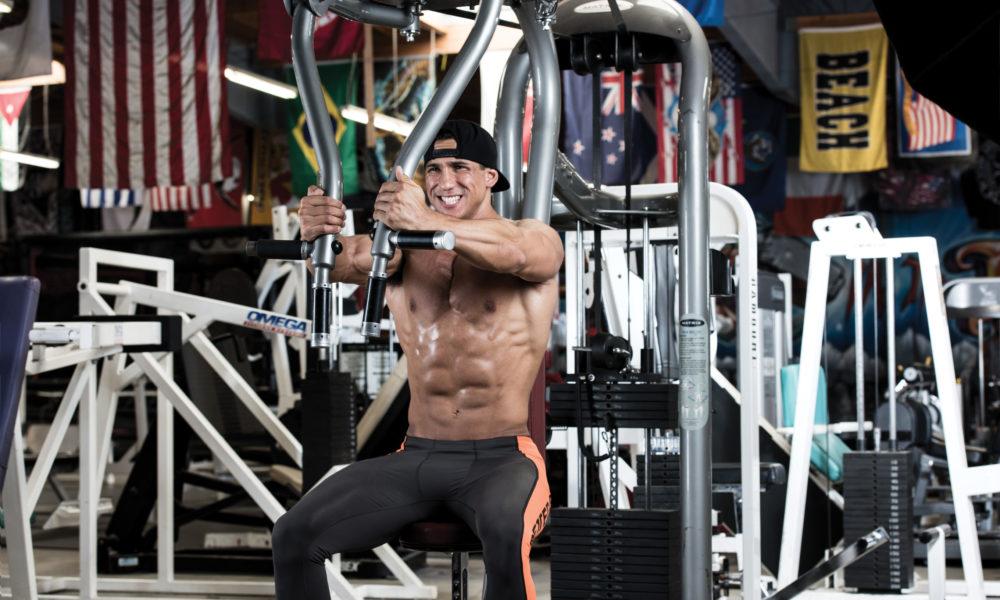

Ultra-high reps are amazing for breaking through hypertrophy plateaus. Here’s how to do them right.
By Alexander Juan Antonio Cortes
For advanced lifters who have been training progressively and consistently for more than five years, gains in mass are increasingly hard to come by. When you’ve used multiple methods, and all the conventional rep ranges, you can be lost when it comes to finding the next “level” up
That next level up may be high reps. And not just “high” reps, but very high reps, meaning 30, 40, 50, all the way to 100 even. In one set.
Sound insane? It might, but contrary to what you may believe, there is strong historical and scientific evidence that supports ultra-high rep training for increased muscle mass.
Ultra-High Reps Throughout History
Unbeknownst to many modern lifters, ultra-high reps were commonly recommended by physical culturalists at the turn of the 20th century. Strongmen such as Arthur Saxon, Eugen Sandow, and Sig Klein all recommended 20-plus rep sets as a powerful stimulus that would increase lean body mass while improving strength and endurance. High reps were not only for “endurance,” but rather were considered the most powerful, albeit most tiring, way to stimulate the body to grow new muscle tissue.
Moving into the more modern era, there is a long history of high-level bodybuilders using very high reps to boost muscle growth. Steve Reeves, Serge Nubret, Vince Gironda, Steve Michalik, John Meadows, and Milos Sarcev are just a few.
While these men did not rely solely on high reps in their training, they would use them at various points to break through plateaus. Steve Reeves was the first modern bodybuilder to use a mixed format to train with low-, middle-, and high-rep ranges, and both compound and isolation exercises. His physique was considered the most chiseled of his era. Serge Nubret was very well known for using 20-rep sets with compound movements, and he had the most “3D” physique of his era.
Vince Gironda, the world’s first bodybuilding coach and personal trainer, was a major proponent of high-rep sets and rep schemes. He was the progenitor of 10×10 and 8×8 training, and he would often recommend very high–rep sets to volumize muscles with as much blood flow as possible.
In today’s era, bodybuilding competitors and coaches like Meadows and Sarcev have their trainees perform long-duration sets to bring up lagging muscle groups and improve the mind-muscle connection. Charles Staley, a performance coach for elite level athletes, is a fan of using “escalating density sets” (EDT) in which 100-plus reps may be performed over 10 minutes, alternating between two exercises. He uses the EDT method for busting through hypertrophy plateaus with his athletes.
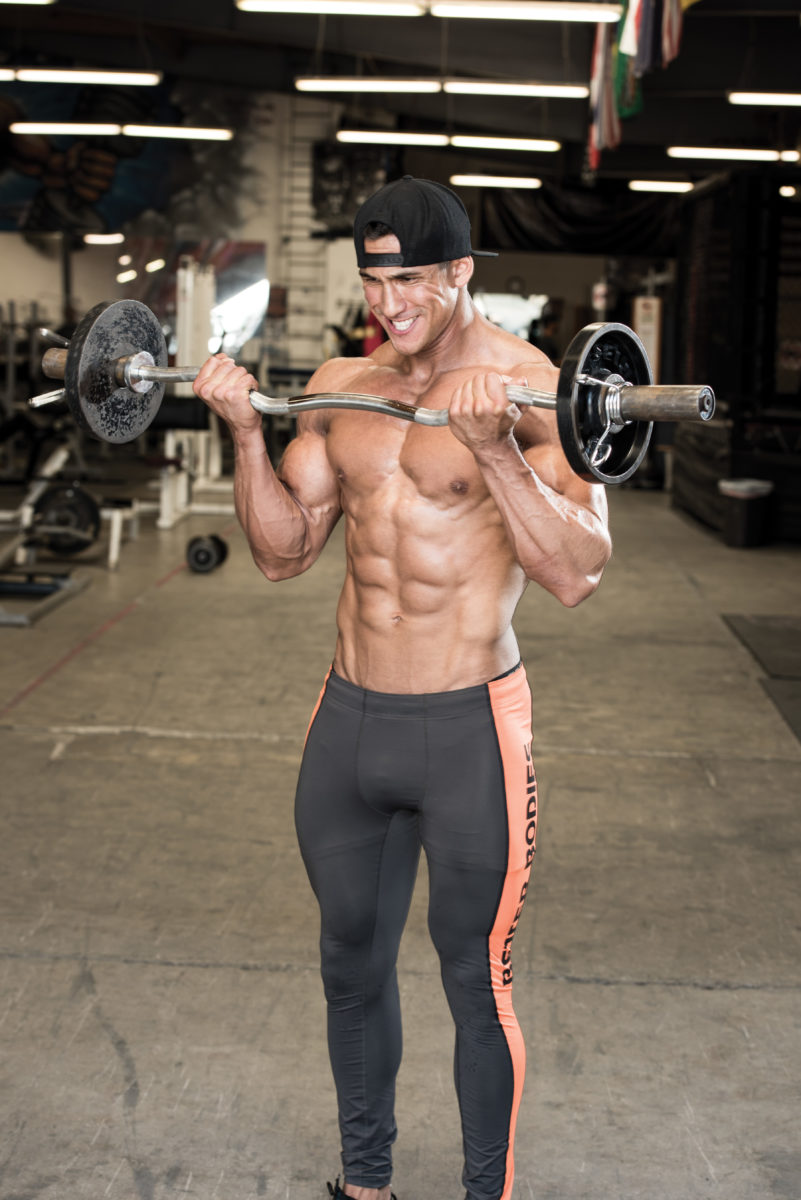
The Scientific Evidence
Muscle fibers come in a range of sizes. The smallest muscle fibers are commonly called type I, while the larger fibers are referred to as type II. The type II fibers have been proven to have the most potential for growth, and this has created a belief that they should be emphasized the most in training.
This is not wrong, but it’s an incomplete picture. The principal point that is misunderstood is that while they grow the “most” relative to their size and function, the type I, fibers also have proportional growth potential. Relative to being smaller and have different functionality though, they will never be as “big” as the type II fibers. Type I fibers are smaller, are heavily oxygenated due to having greater blood flow than type II fibers, and training them requires very high reps to fully fatigue them.
This is why hypertrophy is best accomplished with performing all rep ranges, from low to middle to high. If a trainee only uses low reps, they will never maximize their muscular growth. If a trainee only uses high reps, they also will miss out on on potential hypertrophy.
The caveat is that the more years you train and the closer you get to your maximum muscular potential, the harder it is to create novel stimulus for new growth. This is where very high reps come in. If you’re struggling to break through a size plateau, very high reps may be that novel stimulus that spurs your growth. High reps can stimulate the type I fibers that previously haven’t been fully explored with conventional rep ranges.
Performing ultra-high reps creates a metabolic disturbance that is not reached with lower reps. Combined with time under tension, the buildup of metabolites from repeated muscular contraction, and the eccentric damage from doing so many reps, you’ve got an incredibly powerful stimulus for muscle growth.
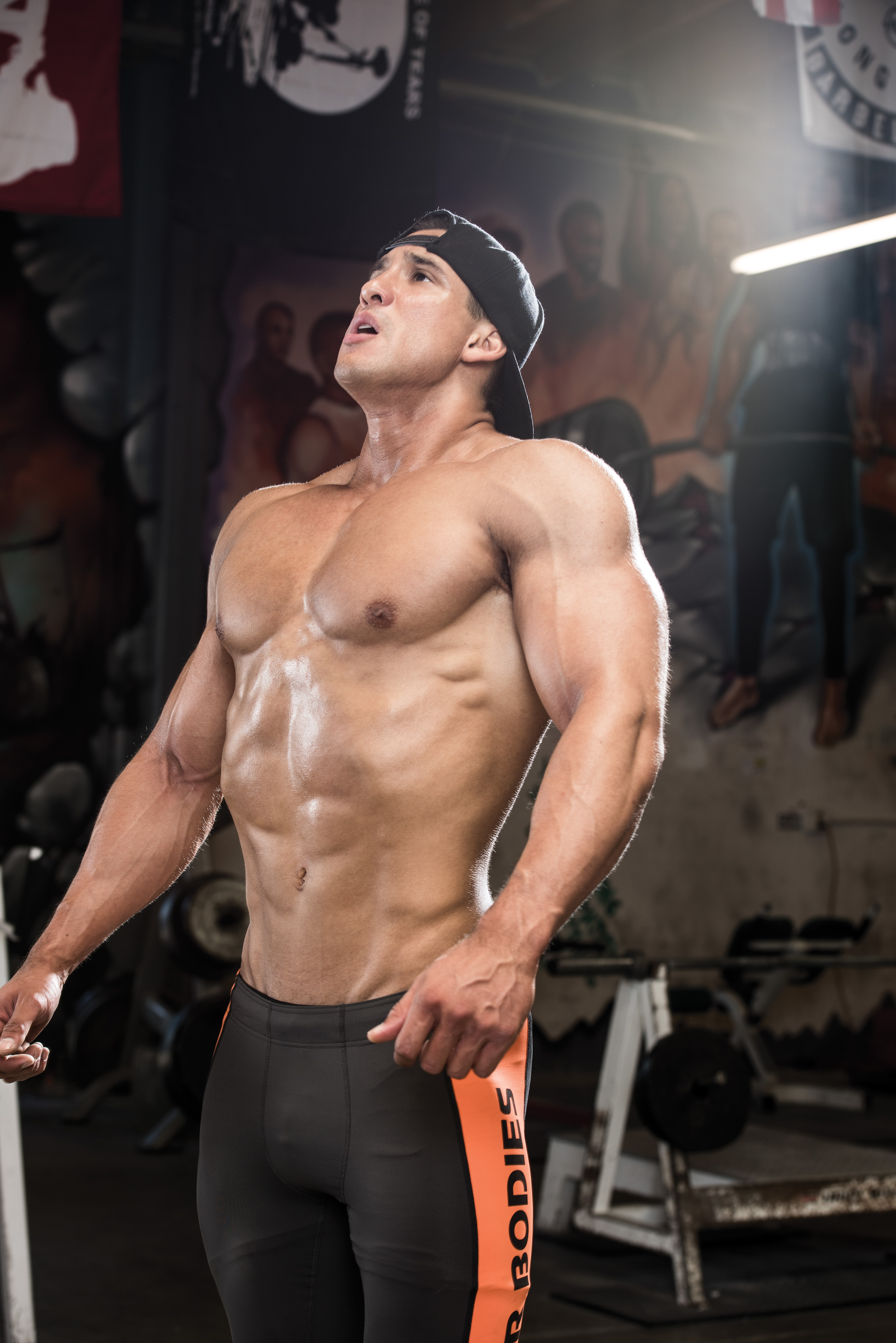
The 100s Hypertrophy Protocol
Historical and scientific evidence accounted for, what is the 100s protocol?
It is one exercise, performed for one hundred reps, in as few sets as possible. This is an incredibly potent stimulus for hypertrophy, and certain guidelines must be followed.
This protocol should only be used for single single-joint movements or bodyweight exercises. Compound movements are not well suited for ultra-high reps. Isolation and bodyweight exercises are the safest and most direct way to create the hypertrophy stimulus.
Secondly, this protocol should be performed last in a training session. These exercises are all extremely fatiguing, and they will compromise your training performance if you do them at the beginning of a workout.
Lastly, perform this protocol for no more than two muscle groups at any given time, and once a week at a maximum.
- Select one of the movements below, and start your set with with a weight that is a rate of perceived exertion (RPE) of around four to five for 25 reps. So, pretty easy.
- After the initial 25 reps, take five deep breaths, then continue performing reps. You will find that your rep ranges get shorter, with forced breaks becoming necessary. Limit your breaks to 15 seconds or less.
- Attempt to get as far into your 100 rep set as possible before pausing to take a longer rest. Ideally this should be at the 40- to 60-rep mark.
- When you hit failure around 40 to 50 reps, perform “cluster breathing.” Take five deep breaths, then perform as many reps possible. Repeat until 100 reps is achieved.
- If at any point you reach total failure, lighten the load, or cease the movement if absolutely necessary.
- Do not perform slow reps. These reps should be done quickly and rhythmically.
- Don’t worry how long it takes to complete the 100 reps, but take the least amount of rest possible between sets.
LOWER BODY
Goblet Squats: Perform with a dumbbell or kettlebell. Hold the weight with both hands at chest height, and take a narrow to moderate foot position. Perform goblet squats as you would a front squat, staying very upright in the torso, descending all the way down, and then ascending back up in a straight line.
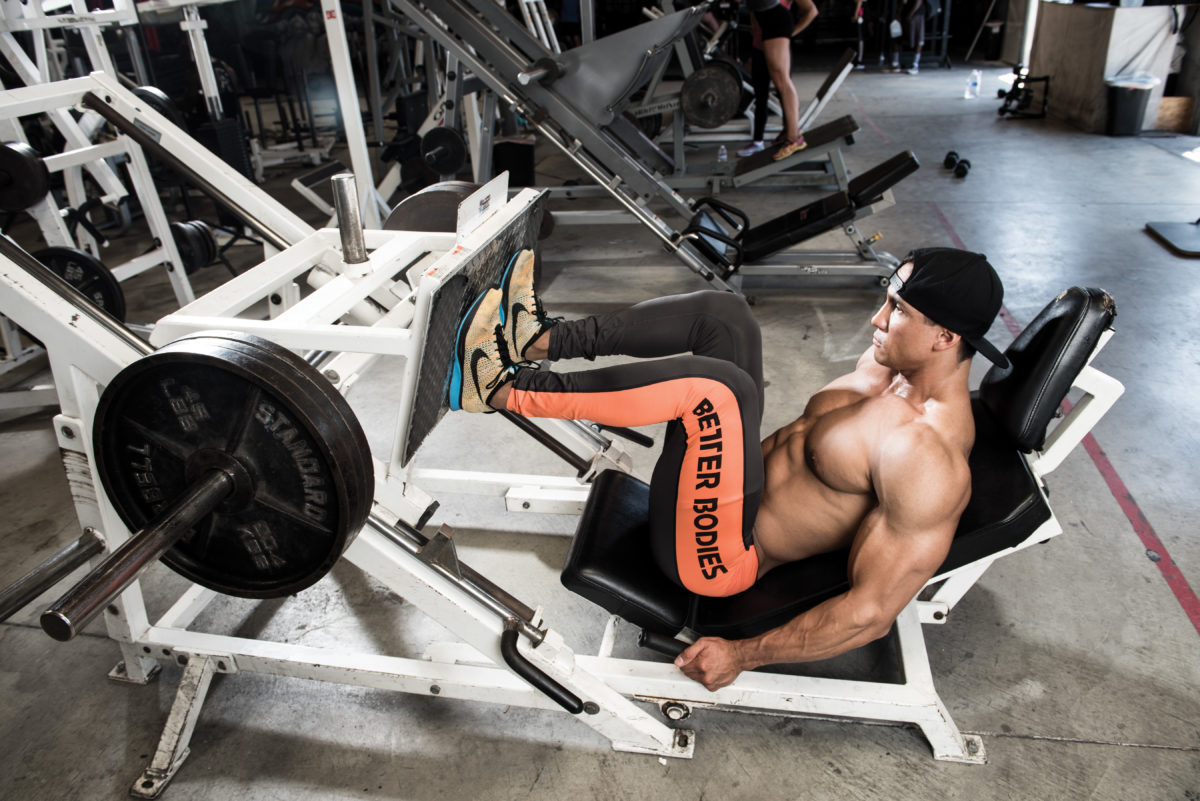
Leg Press: Select a leg-press apparatus that gives you complete lumbar support and has easy-to-use safety catches should you need to cease your set at any point. To emphasize quad development, position your feet no wider than your shoulders. Use as complete a range of motion as possible.
Seated Leg Curl: The best version of this machine will lock in your knees and thighs, and put all the stress upon the hamstring. When performing repetitions, stop just short of full extension.
UPPER-BODY PRESSING
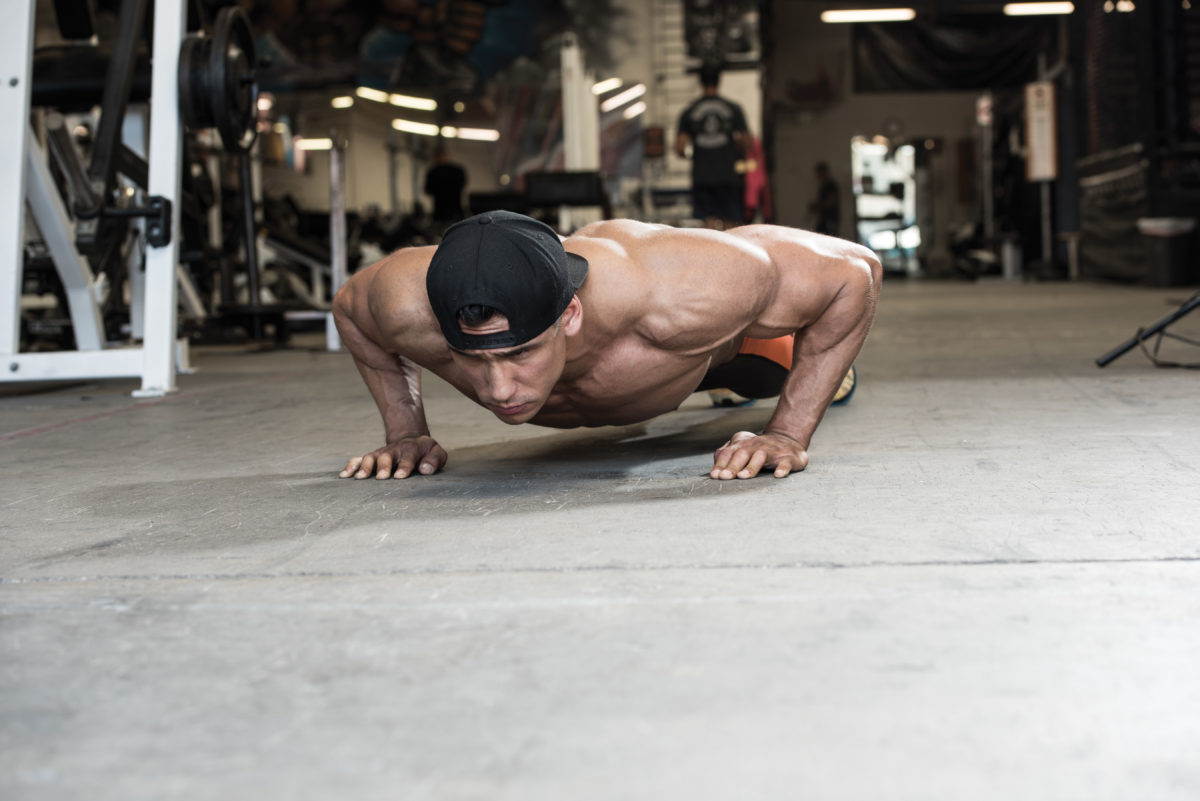
Push-Ups: Push-ups are one of the few bodyweight movements that can be performed for very-high reps with little concern to injury. When performing push-ups, use a close grip or shoulder-width grip—this will spare the shoulder from excessive stress. A slight elevation of the feet can make the movement easier as well. Touch the chest on every rep. If you reach total failure before 100 reps, elevate the hands as high as needed to complete the entire set.
Machine Flyes: Adjust the seat height and lever arms so that you are positioned as strongly as possible for your set. Do not perform machine flyes with an excessive range of motion.
Triceps Pushdowns: A straight bar or V-handle bar works best for high-rep pushdowns. A rope attachment will fatigue your hands from gripping before it burns out your triceps. The pushdowns can be performed with somewhat “loose” technique, so long as a complete range of motion is used.
Dumbbell Lateral Raises: These can be extremely humbling, so start lighter than you think you need to. It’s possible that you will hit muscular failure and be unable to perform full-range-of-motion reps to shoulder height. If this occurs, continue performing partial reps until all reps have been completed.
UPPER-BODY PULLING
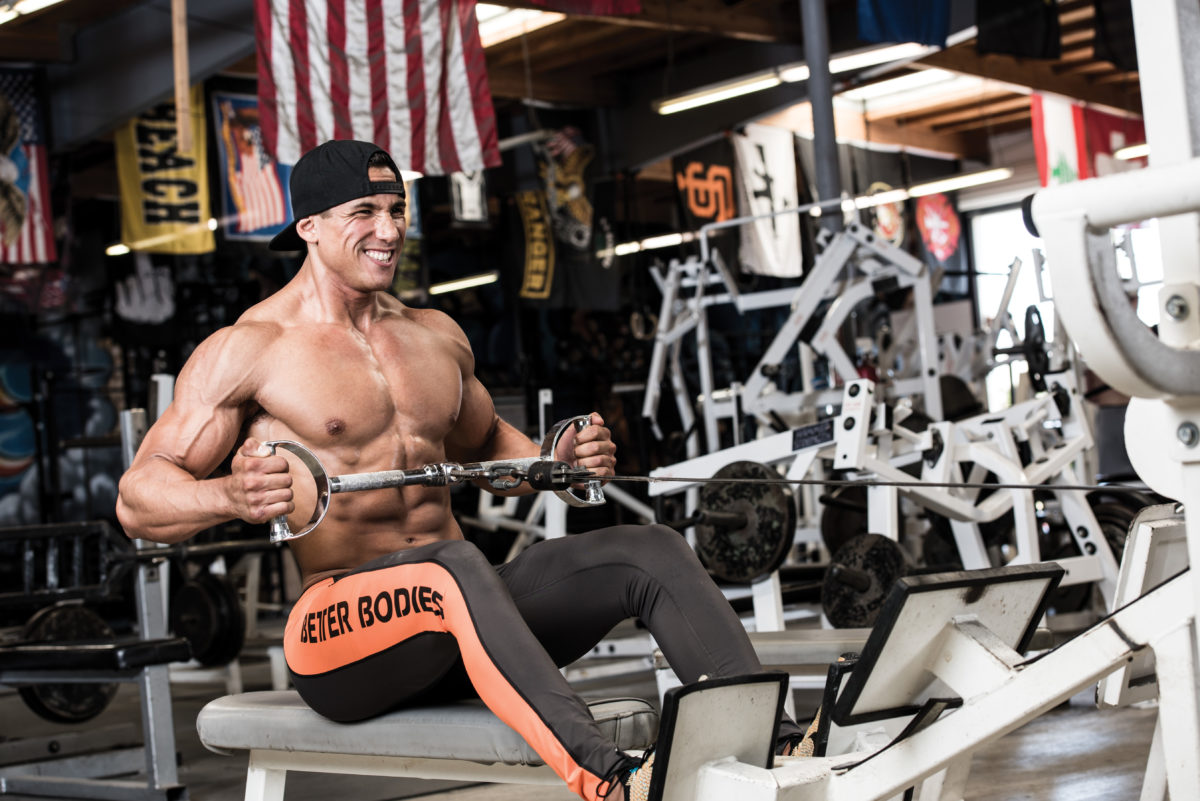
Seated Neutral-Grip Cable Rows: You want to select a handle that allows for a moderate-width neutral grip, if possible. Straps are recommendable as well. Your biceps and forearms may fatigue before your back does, and using straps will bypass this issue. Performing these in sets of 20 reps is the best strategy for completing all 100 reps in the shortest time possible.
45-Degree Hyperextensions: These are best done in sets of 10 to 30 reps, with short breaks between each set. Performing continuous hyperextensions tends to cause an extreme lumbar and glute pump that inhibits any movement of the spine. Performing 30, 30, 20, and 20 reps is the suggested strategy.
EZ-Bar Curls: These are brutal. Past 20 reps, this entire sequence is a practice of pain tolerance, as your arms and hands will want to quit. Do not drop the bar, but you may rest it on the thighs as needed.







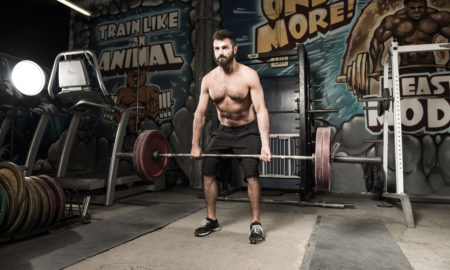










You must be logged in to post a comment Login